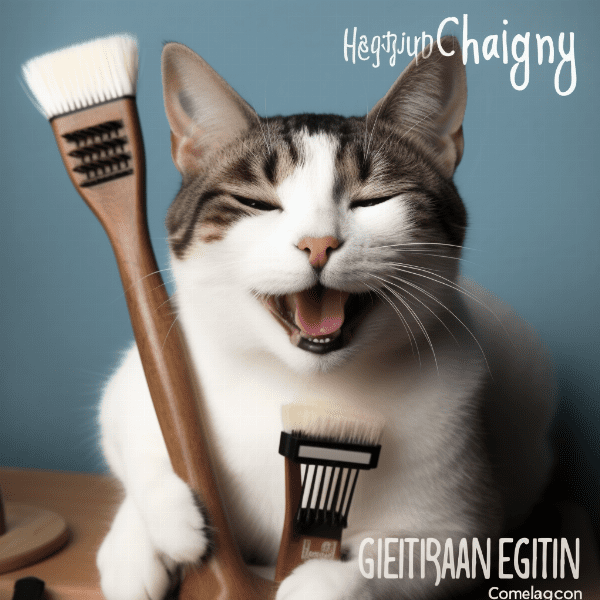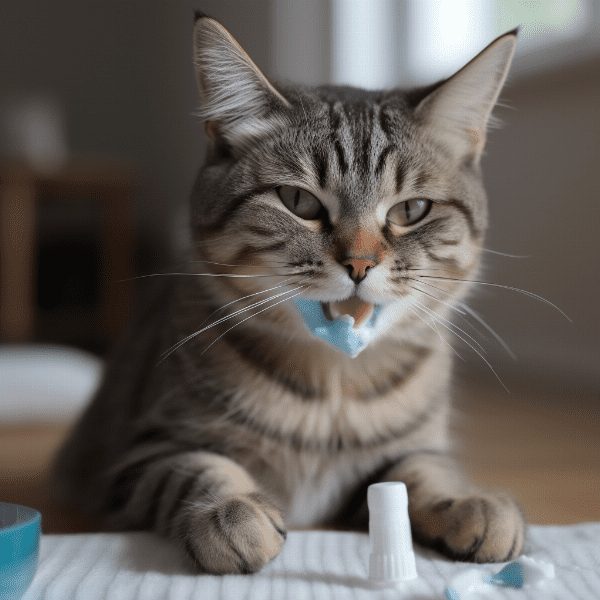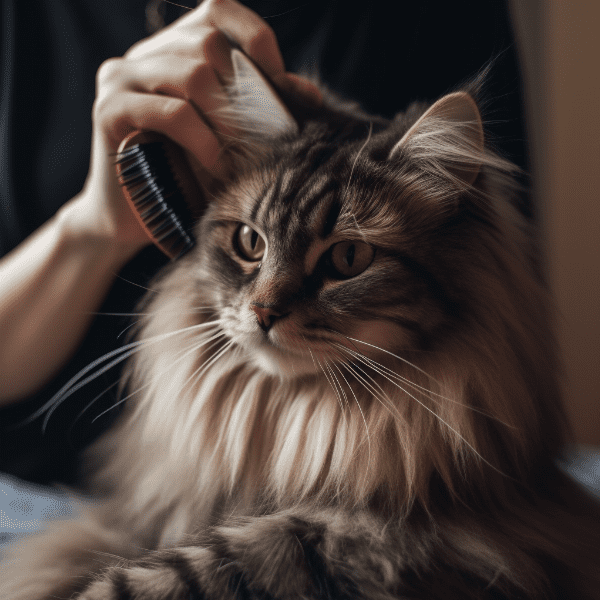Table of Contents
- Benefits of Regular Brushing
- Choosing the Right Brush for Short Haired Cats
- Preparing Your Cat for Brushing
- Brushing Techniques for Short Haired Cats
- Dealing with Shedding and Hairballs
- Tips for Making Brushing a Positive Experience
- Other Grooming Considerations for Short Haired Cats
- How Often to Brush Your Short Haired Cat
- Troubleshooting Common Brushing Problems
- Final Thoughts on Brushing Your Short Haired Cat
Benefits of Regular Brushing
Regular brushing of your short haired cat can provide a multitude of benefits beyond just keeping their coat shiny and soft. Here are some of the main benefits of brushing your cat regularly:
1. Preventing Hairballs
Hairballs are an unpleasant and potentially dangerous problem that can occur when cats swallow too much hair while grooming themselves. Regular brushing can help prevent the buildup of loose fur in your cat’s stomach, reducing the risk of hairballs and associated problems like vomiting and digestive issues.
2. Promoting Skin Health
Brushing your cat’s coat helps distribute natural oils throughout their skin, keeping it healthy and moisturized. This can help prevent dryness, itching, and other skin irritations that can cause discomfort and lead to skin infections.
3. Reducing Shedding
Regular brushing can help remove loose fur from your cat’s coat before it ends up on your furniture or clothing. By removing this fur before it has a chance to shed naturally, you can reduce the amount of fur that accumulates in your home and minimize allergic reactions in people who are sensitive to cat dander.
4. Strengthening the Bond with Your Cat
Brushing your cat regularly is a great way to bond with them and show them affection. This can help strengthen your relationship with your cat and make them feel more comfortable and relaxed around you.
5. Early Detection of Health Issues
Regular brushing allows you to examine your cat’s coat and skin for any signs of abnormalities or health issues. By catching potential problems early, you can seek treatment before they become more serious and potentially life-threatening.
In conclusion, regular brushing of your short haired cat can provide numerous benefits beyond just keeping their coat looking nice. From preventing hairballs and promoting skin health to reducing shedding and strengthening your bond, there are plenty of reasons to make brushing a regular part of your cat’s grooming routine.
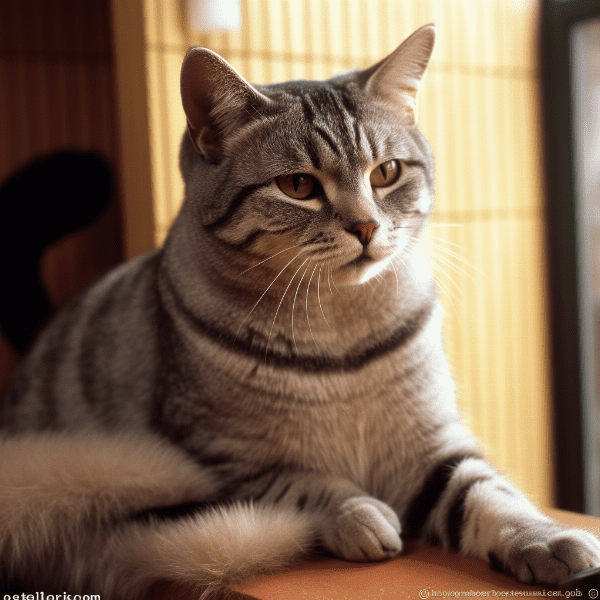
Choosing the Right Brush for Short Haired Cats
When it comes to grooming your short haired cat, choosing the right brush is essential for ensuring that you’re able to effectively remove loose fur, prevent tangles and mats, and keep their coat healthy and shiny. Here are some tips for choosing the right brush for your short haired cat:
1. Look for a Brush with Short, Dense Bristles
Short haired cats typically have a fine, sleek coat, so you’ll want to look for a brush with short, dense bristles that can effectively remove loose fur without damaging their delicate skin. A rubber brush with small, closely spaced bristles can work well for this purpose, as can a slicker brush with short, fine bristles.
2. Consider Your Cat’s Sensitivity
Some cats are more sensitive to brushing than others, so you’ll want to choose a brush that’s appropriate for your cat’s temperament. If your cat is particularly sensitive, you may want to opt for a softer brush or a brush with more flexible bristles that won’t irritate their skin.
3. Think About Your Own Comfort
Brushing your cat can be a time-consuming task, so it’s important to choose a brush that feels comfortable in your hand and won’t cause you any discomfort or strain. Look for a brush with a comfortable handle that’s easy to grip, and consider the size and shape of the brush in relation to your own hand size and dexterity.
4. Don’t Forget About Additional Tools
In addition to a basic brush, there are several other grooming tools that can be helpful for maintaining your short haired cat’s coat. A grooming glove can be a useful tool for removing loose fur and providing a gentle massage, while a shedding blade can help remove stubborn mats and tangles.
5. Ask Your Vet or Groomer for Recommendations
If you’re unsure about which type of brush or grooming tool to use for your short haired cat, don’t hesitate to ask your vet or a professional groomer for recommendations. They can provide valuable guidance based on your cat’s unique coat type and grooming needs.
In conclusion, choosing the right brush for your short haired cat is an important part of maintaining their health and appearance. By selecting a brush with short, dense bristles that’s appropriate for your cat’s sensitivity and your own comfort, and considering additional tools like a grooming glove or shedding blade, you can ensure that your cat’s coat stays healthy, shiny, and free from tangles and mats.
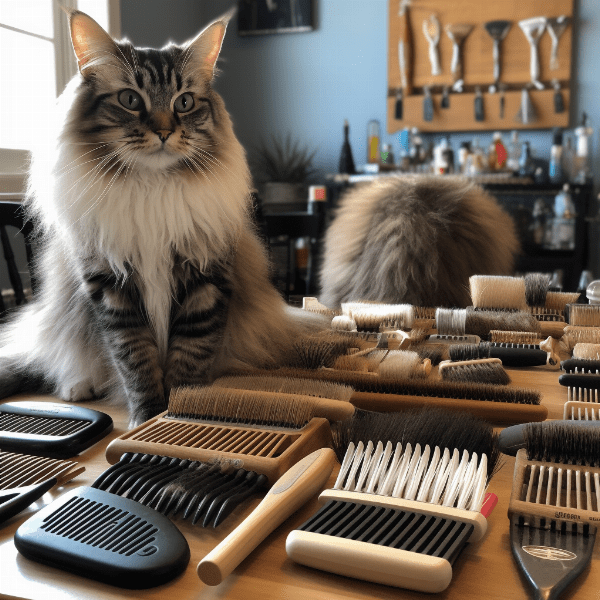
Preparing Your Cat for Brushing
Preparing your short haired cat for brushing is essential for ensuring that the experience is positive and stress-free for both you and your cat. Here are some tips for getting your cat ready for a grooming session:
1. Choose a Quiet, Calm Environment
Cats are sensitive to their environment, so it’s important to choose a quiet, calm area where they can feel relaxed and comfortable during the grooming process. Avoid loud noises, bright lights, and other distractions that could cause your cat to become anxious or agitated.
2. Introduce Your Cat to the Brush
Before you start brushing, introduce your cat to the brush by letting them sniff it and get used to its texture and smell. This can help your cat feel more comfortable and reduce the likelihood of them becoming startled or frightened during the grooming process.
3. Use Treats to Encourage Positive Behavior
Using treats can be a great way to encourage your cat to associate brushing with positive experiences. Offer your cat a small treat before, during, and after the grooming session to help them feel more relaxed and comfortable.
4. Start Slowly and Gently
When you’re ready to start brushing, begin slowly and gently, using light strokes to remove any loose fur or tangles. Be patient and take breaks if your cat becomes restless or agitated, and don’t force your cat to sit still or tolerate the grooming process if they’re uncomfortable.
5. Offer Positive Reinforcement
Throughout the grooming process, offer your cat plenty of positive reinforcement in the form of verbal praise, petting, and treats. This can help your cat associate brushing with positive experiences and make the process more enjoyable for both of you.
By preparing your short haired cat for brushing and taking steps to create a calm, positive environment, you can help ensure that grooming sessions are stress-free and enjoyable for both you and your cat.
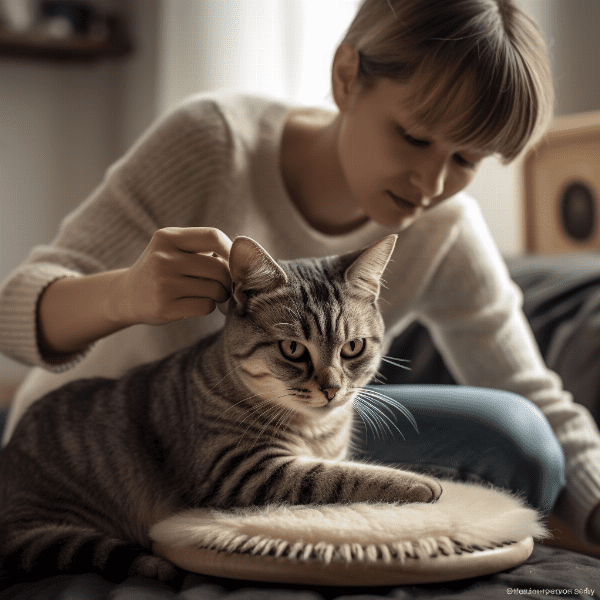
Brushing Techniques for Short Haired Cats
Effective brushing techniques are key to maintaining your short haired cat’s coat and preventing tangles, mats, and other issues. Here are some tips for brushing your short haired cat:
1. Start with Light Strokes
When you begin brushing, start with light strokes to remove any loose fur and get your cat used to the sensation of being groomed. Use a gentle touch to avoid irritating your cat’s skin or causing discomfort.
2. Brush in the Direction of Hair Growth
Brushing in the direction of your cat’s hair growth can help prevent tangles and mats from forming, and can make the grooming process more comfortable for your cat. Use a soft, circular motion to remove any loose fur, taking care not to pull or tug at your cat’s coat.
3. Pay Attention to Sensitive Areas
Short haired cats may have sensitive areas like their belly, underarms, and hind legs, so it’s important to be gentle and careful when brushing these areas. Use light strokes and take breaks if your cat becomes agitated or uncomfortable.
4. Use Additional Tools as Needed
If you encounter stubborn tangles or mats, you may need to use additional grooming tools like a shedding blade or comb to remove them. Use these tools gently and take care not to irritate your cat’s skin or cause discomfort.
5. Finish with a Gentle Massage
After you’ve finished brushing, give your cat a gentle massage to help them relax and further distribute natural oils throughout their coat. Use light pressure and circular motions to soothe your cat and show them affection.
By using these brushing techniques and taking care to be gentle and attentive to your cat’s needs, you can maintain your short haired cat’s coat and prevent tangles, mats, and other issues from developing.

Dealing with Shedding and Hairballs
Shedding and hairballs are common issues that can affect short haired cats, but there are several ways to deal with them and keep your cat healthy and comfortable. Here are some tips for managing shedding and preventing hairballs:
1. Brush Your Cat Frequently
Regular brushing is one of the best ways to manage shedding in short haired cats. By removing loose fur before it has a chance to shed naturally, you can minimize the amount of fur that ends up on your furniture and clothing. In addition, regular brushing can help prevent hairballs by reducing the amount of loose fur that your cat ingests while grooming themselves.
2. Feed Your Cat a High-Quality Diet
A high-quality diet can help promote healthy skin and reduce shedding in cats. Look for a food that contains a balance of protein, healthy fats, and essential nutrients, and avoid foods with fillers or artificial preservatives that can contribute to shedding.
3. Provide Plenty of Water
Drinking plenty of water can help keep your cat’s digestive system running smoothly and reduce the risk of hairballs. Make sure your cat always has access to clean, fresh water, and consider providing wet food or adding water to their dry food to help increase their fluid intake.
4. Consider Hairball Remedies
There are several hairball remedies available that can help prevent hairballs and reduce their symptoms. These may include special diets or supplements that help break down hairballs and make them easier for your cat to pass, or hairball lubricants that help the fur move through your cat’s digestive system more easily.
5. Consult Your Vet if Problems Persist
If your short haired cat continues to experience shedding or hairball issues despite your best efforts, it’s important to consult your vet. They can provide valuable guidance and help identify any underlying health issues that may be contributing to the problem.
By following these tips and taking steps to manage shedding and prevent hairballs, you can keep your short haired cat healthy and comfortable, and minimize the amount of fur that ends up on your furniture and clothing.
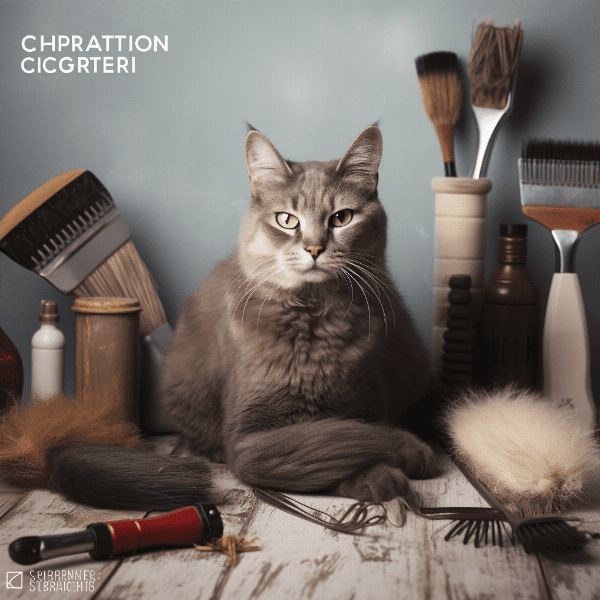
Tips for Making Brushing a Positive Experience
Brushing your short haired cat can be a great way to bond with them and maintain their coat, but it’s important to make the experience as positive and stress-free as possible. Here are some tips for making brushing a positive experience for both you and your cat:
1. Start Young
Introducing your cat to brushing when they’re young can help them get used to the sensation and make the grooming process easier as they grow older. Start with short, gentle grooming sessions and gradually increase the length and frequency as your cat becomes more comfortable.
2. Use Positive Reinforcement
Positive reinforcement can be a great way to encourage good behavior during brushing sessions. Offer your cat treats, praise, and affection throughout the grooming process to help them associate brushing with positive experiences.
3. Make Brushing a Regular Routine
Regular brushing can help your cat get used to the grooming process and make it easier for both of you. Aim to brush your short haired cat at least once a week, and consider increasing the frequency during shedding season to help manage loose fur.
4. Be Patient and Gentle
Being patient and gentle during brushing sessions is key to making the experience positive for your cat. Use light strokes and avoid tugging or pulling at your cat’s coat, and take breaks if your cat becomes agitated or uncomfortable.
5. End on a Positive Note
Ending brushing sessions on a positive note can help your cat feel more relaxed and comfortable during future grooming sessions. Offer treats and affection after each session to help your cat associate grooming with positive experiences.
By following these tips and taking steps to make brushing a positive experience, you can maintain your short haired cat’s coat and strengthen your bond with them.

Other Grooming Considerations for Short Haired Cats
While regular brushing is a key part of maintaining your short haired cat’s coat, there are several other grooming considerations to keep in mind. Here are some tips for keeping your cat healthy and comfortable:
1. Trim Your Cat’s Nails
Trimming your cat’s nails regularly can help prevent them from becoming too long and causing discomfort or injury. Use a pair of specialized cat nail clippers and be careful not to cut the quick, which can cause bleeding and pain.
2. Clean Your Cat’s Ears
Cleaning your cat’s ears can help prevent ear infections and other issues. Use a specialized ear cleaning solution and cotton balls or gauze to gently clean the inside of your cat’s ears, taking care not to insert anything into the ear canal.
3. Bathe Your Cat as Needed
Short haired cats generally don’t require frequent baths, but you may need to give your cat a bath if they get particularly dirty or develop a skin condition. Use a gentle, cat-friendly shampoo and be sure to rinse your cat thoroughly to avoid leaving any soap residue on their skin.
4. Check for Fleas and Ticks
Fleas and ticks can cause discomfort and potentially transmit diseases to your short haired cat. Use a flea comb to check for signs of fleas and ticks regularly, and consult your vet if you notice any issues.
5. Schedule Regular Vet Visits
Regular visits to the vet can help ensure that your short haired cat stays healthy and happy. Schedule annual checkups and keep up to date with vaccinations and other preventative care measures.
By keeping these grooming considerations in mind and taking steps to maintain your short haired cat’s overall health and wellbeing, you can ensure that they stay healthy, happy, and comfortable for years to come.
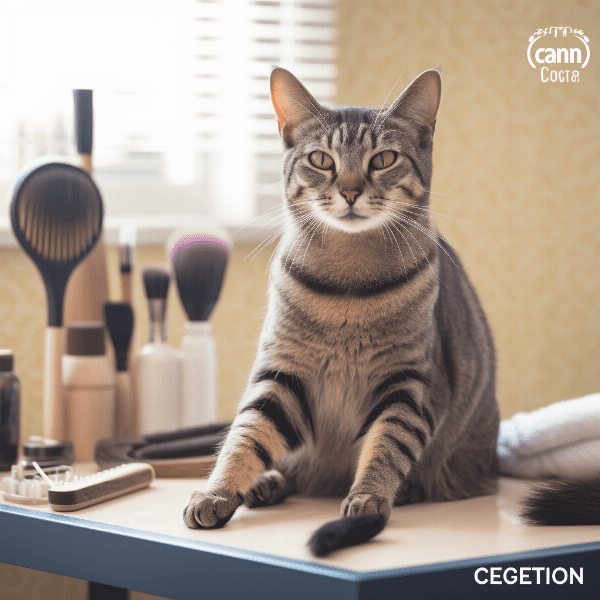
How Often to Brush Your Short Haired Cat
Short haired cats generally require less grooming than long haired cats, but regular brushing is still important for maintaining their coat and preventing tangles, mats, and other issues. Here are some guidelines for how often to brush your short haired cat:
1. Once a Week
In general, it’s a good idea to brush your short haired cat at least once a week to remove any loose fur and prevent tangles from forming. This can also help distribute natural oils throughout their coat and keep their skin healthy.
2. More Frequently During Shedding Season
Short haired cats typically shed less than long haired cats, but they may still experience increased shedding during certain times of the year, such as spring and fall. During these times, it may be necessary to brush your cat more frequently to manage loose fur and prevent it from accumulating in your home.
3. Adjust Based on Your Cat’s Needs
Every cat is unique, so it’s important to adjust your grooming routine based on your cat’s individual needs. If your cat has particularly sensitive skin or is prone to tangles and mats, you may need to brush them more frequently to keep their coat healthy and comfortable.
4. Watch for Signs of Skin or Coat Issues
Watching for signs of skin or coat issues can also help determine how often you should brush your short haired cat. If you notice signs of dry or flaky skin, excessive shedding, or other issues, you may need to adjust your grooming routine or consult your vet for further guidance.
By following these guidelines and adjusting your grooming routine based on your cat’s individual needs, you can help ensure that your short haired cat’s coat stays healthy, shiny, and free from tangles and mats.
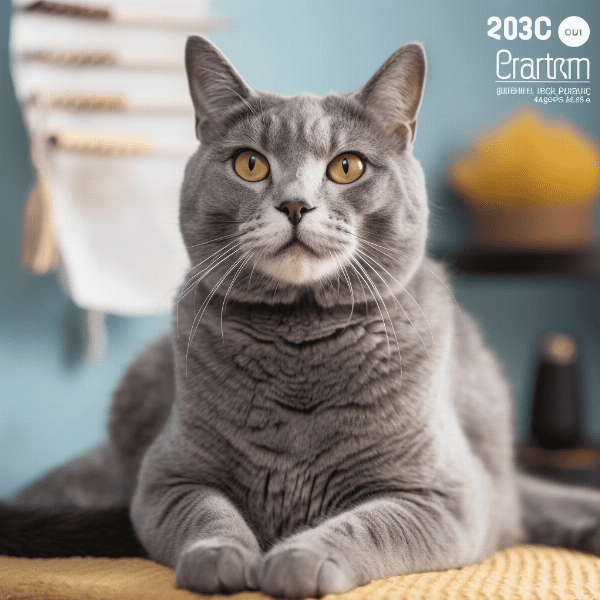
Troubleshooting Common Brushing Problems
While brushing your short haired cat can be a positive and enjoyable experience, there are some common problems that can arise. Here are some tips for troubleshooting these issues and making brushing a stress-free experience for both you and your cat:
1. Your Cat Won’t Sit Still
If your short haired cat won’t sit still during brushing sessions, it may be a sign that they’re uncomfortable or anxious. Try using positive reinforcement techniques like treats and praise to encourage your cat to stay calm, and be patient and gentle when brushing to help them feel more comfortable.
2. Your Cat is Shedding Excessively
Excessive shedding can be frustrating and may indicate an underlying health issue. Make sure you’re brushing your cat regularly to manage loose fur, and consult your vet if you notice excessive shedding or any other signs of illness.
3. Your Cat has Tangles or Mats
Tangles and mats can be uncomfortable and potentially painful for your cat. Use a specialized cat grooming tool like a comb or shedding blade to carefully remove any tangles or mats, taking care not to tug or pull at your cat’s fur.
4. Your Cat is Grooming Too Much
If your short haired cat is grooming themselves excessively, they may be ingesting too much fur and developing hairballs. Regular brushing can help reduce the amount of loose fur that your cat ingests, and hairball remedies may be necessary if your cat continues to experience hairball issues.
5. Your Cat is Resistant to Brushing
If your cat is resistant to brushing despite your best efforts, it may be helpful to consult a professional cat groomer or behaviorist. They can provide additional guidance and help you identify the underlying cause of your cat’s resistance.
By troubleshooting common brushing problems and taking steps to make grooming a positive and stress-free experience, you can help maintain your short haired cat’s coat and prevent issues like tangles, mats, and excessive shedding.

Final Thoughts on Brushing Your Short Haired Cat
Regular brushing is an important part of maintaining your short haired cat’s coat and overall health. By using the right tools and techniques, and being patient and gentle with your cat, you can make brushing a positive and stress-free experience for both you and your furry friend.
Remember to choose the right brush for your cat’s coat, prepare them properly for grooming sessions, and watch for signs of common issues like shedding, hairballs, and tangles. By taking a proactive approach to grooming and being attentive to your cat’s needs, you can help prevent these issues and keep your cat healthy and comfortable.
If you encounter any problems or have questions about your cat’s grooming needs, don’t hesitate to consult your vet or a professional cat groomer. With the right knowledge and tools, you can ensure that your short haired cat stays healthy, happy, and well-groomed for years to come.
